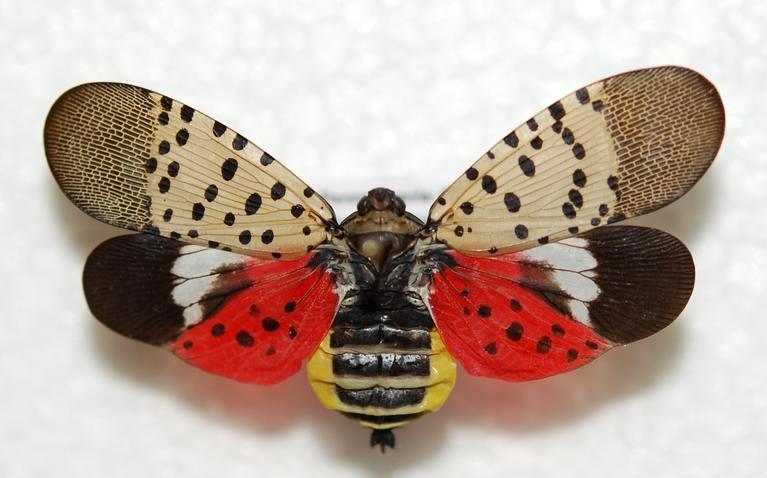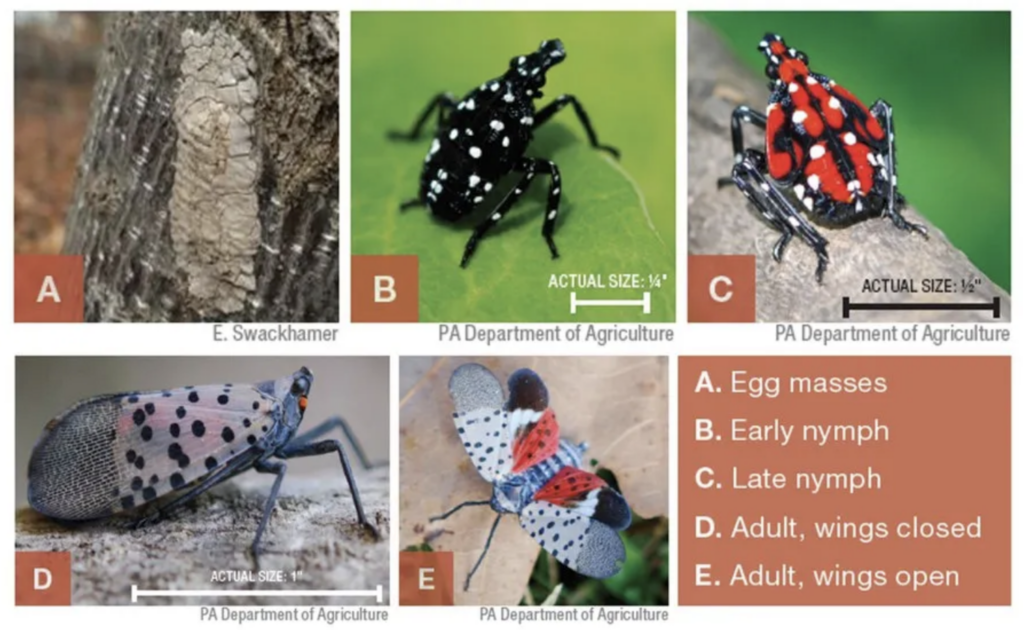Invasive spotted lanternfly arrives in Illinois—here’s why you should crush them

Photo from Maryland Department of Agriculture
Illinois greets the fall season with the arrival of a new pest threatening to sour the festivities: the spotted lanternfly.
The Illinois Department of Agriculture confirmed on Sept. 26 the first appearance of the spotted lanternfly (Lycorma deliculata, also referred to as SLF) in the state. It follows the identification of an undisclosed moderately populated area of the invasive species in Illinois on Sept. 18. Confirming specimen results, the department clarifies that they do not present any human or animal health concerns.
Still, the spotted lanternfly is a public concern. The species has been inching closer to Illinois for close to a decade and has been subject to squish-on-sight requests from the East Coast to the Midwest. Netizens from cities like New York have even started warning Illinoisans to not show the visually striking winged menaces any mercy.
“The SLF feeds on a wide variety of plants, including a strong affinity to the invasive tree of heaven, grapes (both wild and cultivated), and maple trees. These plants should be targeted for any monitoring activities. When feeding, SLF produces honeydew which is a sticky liquid that often coats or accumulates on the foliage and other parts of plants,” says the Illinois Department of Agriculture.
Other states have reported serious damage including oozing sap, wilting, leaf curling and dieback in trees, vines, crops and many other types of plants. SLF’s honeydew is also said to encourage the growth of black sooty mold. Its ability to move easily on wood surfaces and products, vehicles such as trains, outdoor articles, and more make it a challenging pest to contain and anticipate.

Life stages of the spotted lanternfly | Photo from PennState Extension
What to do if you spot a lanternfly
Luckily, its impact in Illinois may not be as dire. “If there is a silver lining associated with spotted lantern fly in Illinois, it is that we have no reason to believe that widespread plant or tree death will result from its presence,” said Illinois Department of Agriculture’s Nursery and Northern Field Office Section Manager Scott Schirmer.
“This is likely going to be a nuisance pest that interferes with our ability to enjoy outdoor spaces and may have some impact on the agritourism industry, including orchards, pumpkin patches, and vineyards.”
The department lists the following as steps Illinoisans can take to help:
- Report sightings. If you see SLF or suspect it, send a report to lanternfly@illinois.edu. The University of Illinois Extension has prepared a fact sheet for reference.
- Remove and destroy pests. Crush nymphs and adults. Scrape egg masses into a container with hand sanitizer or rubbing alcohol to kill them. Remember to take photos first, in order to file a report.
- Check your vehicles, boat, camper, outdoor articles, etc. for signs of the pest.
- Keep your eyes open and spread the word.
For more information, visit the Illinois Department of Agriculture website.

